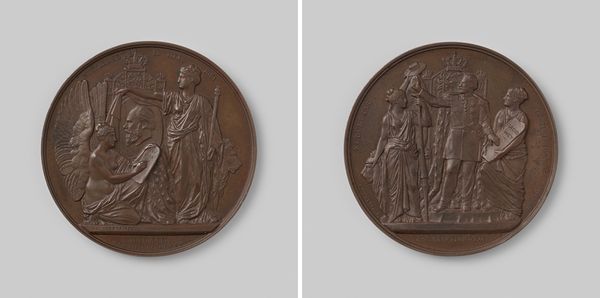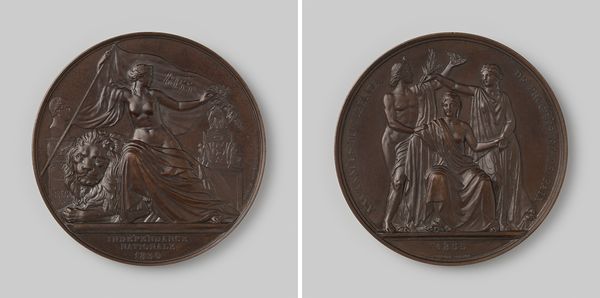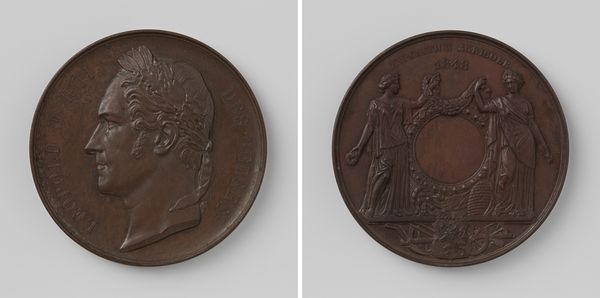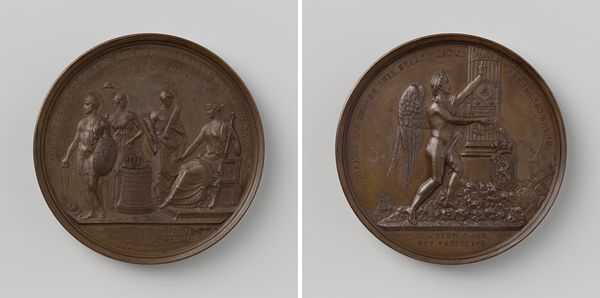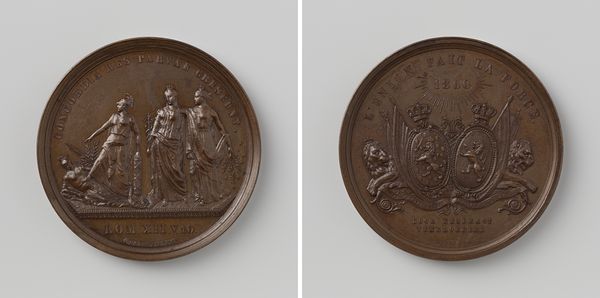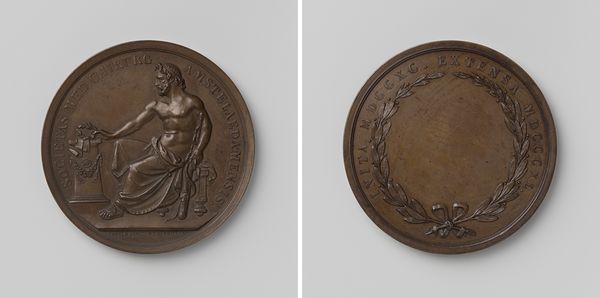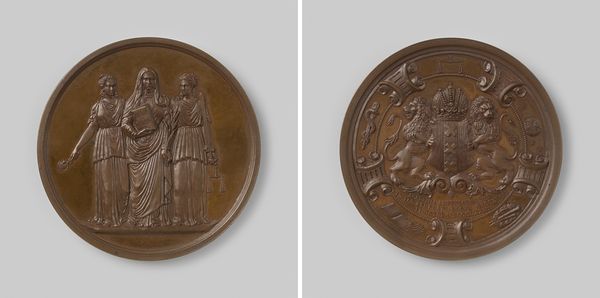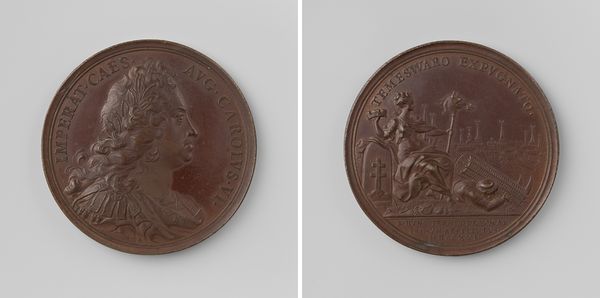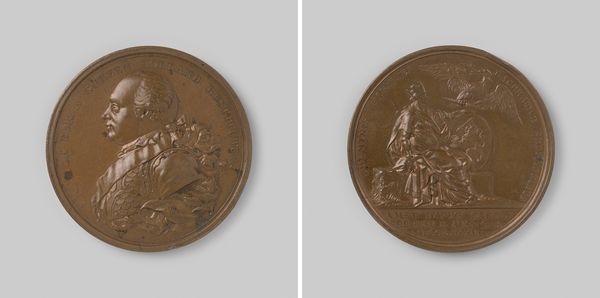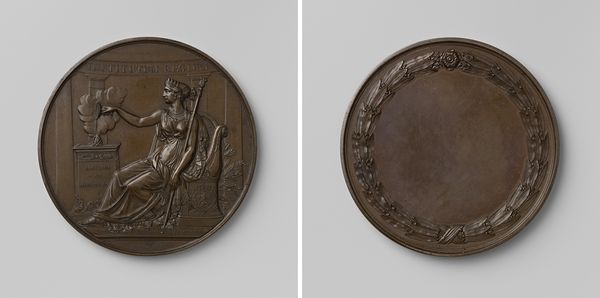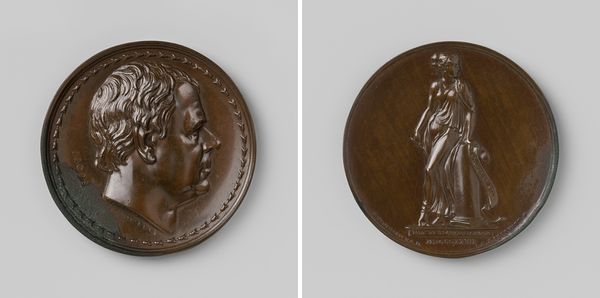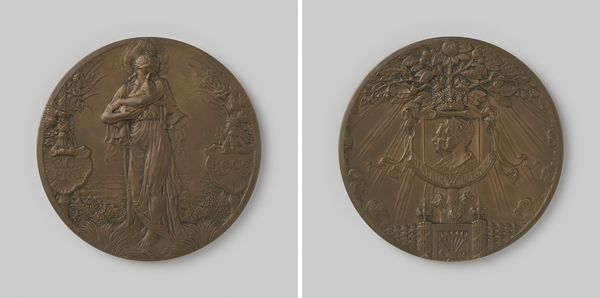
Opening van de spoorlijn van Brussel naar Parijs, ter ere van Lodewijk Filips, koning der Fransen en Leopold I, koning der Belgen 1846
0:00
0:00
relief, bronze, sculpture
#
portrait
#
medal
#
neoclassicism
#
sculpture
#
relief
#
bronze
#
sculpture
#
history-painting
Dimensions: diameter 7.3 cm, weight 210.70 gr
Copyright: Rijks Museum: Open Domain
Editor: So this bronze relief from 1846, by Laurent Joseph Hart, commemorates the opening of the railway line between Brussels and Paris. It looks so stately, so official… What strikes me most is this idea of unity and progress being captured in a commemorative object. How do you interpret this work? Curator: It's crucial to situate this piece within the rapidly changing political and social landscape of the 19th century. What do you see in the way it links royalty and industry, France and Belgium? Editor: Well, on one side we see the faces of King Louis-Philippe of France and Leopold I of Belgium, with a figure who seems to embody winged victory or peace, but then on the other, there appear to be women embodying France and Belgium sitting together. Is this a depiction of a true union, or something more symbolic? Curator: Precisely! Think about what the railway meant – connection, trade, and military movement. This wasn’t merely about transport; it was about consolidating power, both economic and political. What kind of statements does this type of public art make in your opinion? Does it have some common themes with public art today? Editor: That's interesting. I guess both sides sought to stabilize their reigns through visible demonstrations of progress. Today we have public art representing minorities who did not enjoy such visibility during that period, and some of today's leaders still use this method. Curator: Absolutely. The medal presents a carefully constructed image of progress and alliance, but it also glosses over the inequalities and power dynamics that were inherent in this “union.” It prompts us to think critically about whose stories get told and how. Editor: This has really broadened my view of the piece. I had focused on the figures and composition, but not so much on the social implications behind it. Curator: Examining art in its social context allows us to uncover the power structures and ideologies at play. This helps us reflect on the broader implications that exist up to the current day.
Comments
No comments
Be the first to comment and join the conversation on the ultimate creative platform.
